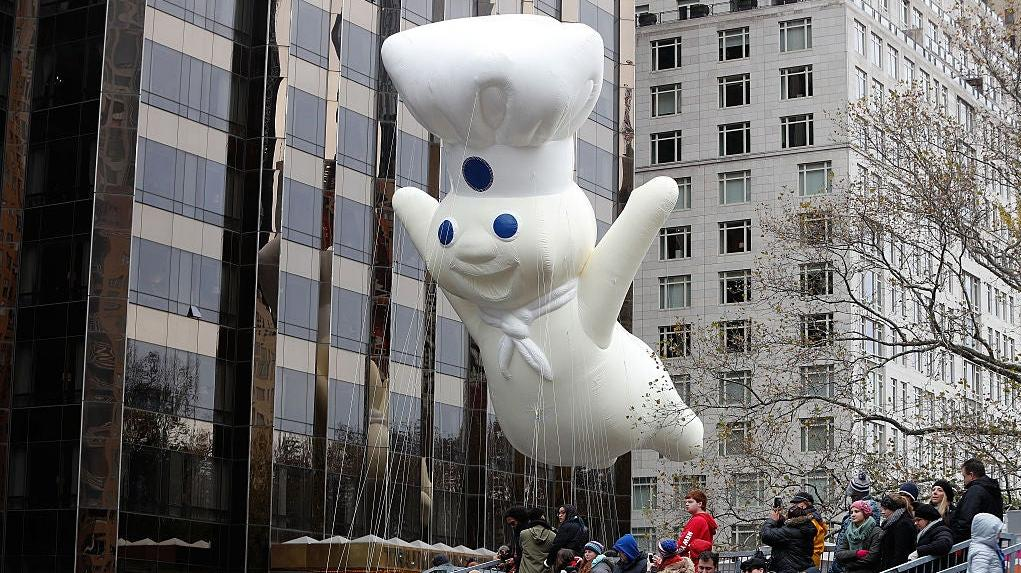How Food Mascots Convince You To Spend More
These colorful characters draw us in and keep us spending, and there's a scientific explanation for that.
Chester Cheetah. Tony the Tiger. The whole M&M's crew. Food brand mascots have an undeniable hold on our minds from youth onward, their costumes and phrases burned into our memories. But how and why are mascots so effective, and why do brands continue to sink millions of dollars into developing them?
The obvious answer might seem to be brand recognition, but that isn't enough to fully explain it. Logos, not mascots, serve as the primary identifier of brands like McDonald's (the golden arches), Taco Bell (the bell), or Domino's (the literally iconic domino). What is that something extra that mascots achieve?
We know that mascots work, because they wouldn't have stuck around for so many decades if they didn't. The Pillsbury Doughboy, for example, was first introduced in 1965 and still makes appearances in both print and TV advertisements to this day. So, are they effective purely because their cartoonish style specifically targets children? Not necessarily. (Mr. Peanut, with his dapper attire and sophisticated vibe, might aim more for entertaining adults than children.)
Let's find out what it is about food mascots that captivates us, and more importantly, our wallets.
Anthropomorphism is key
The very concept of anthropomorphism itself is a big part of how food mascots pull us in. Anthropomorphism is, by Merriam Webster definition, "an interpretation of what is not human or personal in terms of human or personal characteristics." As a species, we have a psychological tendency to attribute human characteristics to nonhuman things.
Mascots do a great job of tapping into this natural instinct to humanize animals or objects. A 2013 research article published in the journal of Psychology & Marketing found that people responded more favorably to animal imagery that featured stronger physical similarities to humans than images of animals without any anthropomorphic qualities.
And it's not just about looks. Anthropomorphizing also includes movement, personality, and emotions. The Kool-Aid Man is known for just two words: "Oh yeah!" But just those two words coupled with a smile and a wave are enough to communicate that Kool-Aid Man is strongly encouraging you to buy and drink his powders. Sonny the Cuckoo Bird's manic motions as the character goes "cuckoo" for Cocoa Puffs convey just how exciting it must be to eat this cereal.
It's simple: We relate to what we know best, which is ourselves. On the other hand, we have trouble understanding anything that differs from us. So adding eyes, mouths, arms, and legs to a round candy like M&M's humanizes the product and allows our minds to relate to it more easily. It's the same as folktales that humanized animal characters (the three little pigs, the ugly duckling) in order to deepen our connection to the message. That's exactly what food mascots do, except the message is, "buy and eat this product."
In fact, some people actually feel more comfortable snacking on something that a bright, smiley cartoon character has endorsed. An 2015 study published in the Journal of Consumer Research found that rather than increase consumers' desire for a product, food mascots allow people to feel less conflicted about indulging in a food that they already wanted but would typically shy away from.
These marketing tools are worth the money spent on them because they build brand affinity in a way that a simple logo can't. Who could say no to that little Pillsbury Doughboy? His giggle after getting poked in the tummy gets me every time.
Brands use mascots because they work
Our connection to walking, talking food products goes deeper than psychological or emotional ties and straight down into our wallets.
A study published in the Journal of Management Information Systems titled "Acting Like Humans? Anthropomorphism and Consumer's Willingness to Pay in Electronic Commerce" focused on the question of whether showing a product in a humanlike form would influence consumers to pay more for a product. The study found that adding those human characteristics increased how much people bid on a product by 7% and also increased the level of attachment they felt to the product. Interestingly, it did not affect their perception of the product's quality.
Research from the Moving Picture Company further indicated that if a brand commits itself to a long-term campaign featuring a character or mascot, its profit could increase by 34.1% compared to 26.2% for campaigns without a mascot. Depending on how much is spent on the initial rollout, this is almost certainly a winning proposition for food and beverage brands.
There's no doubt that brand mascots spark a connection between a consumer and a product, and there's plenty of evidence as to why. We love these characters because they're just like us. Well, at least in a weird, animated sort of way.
